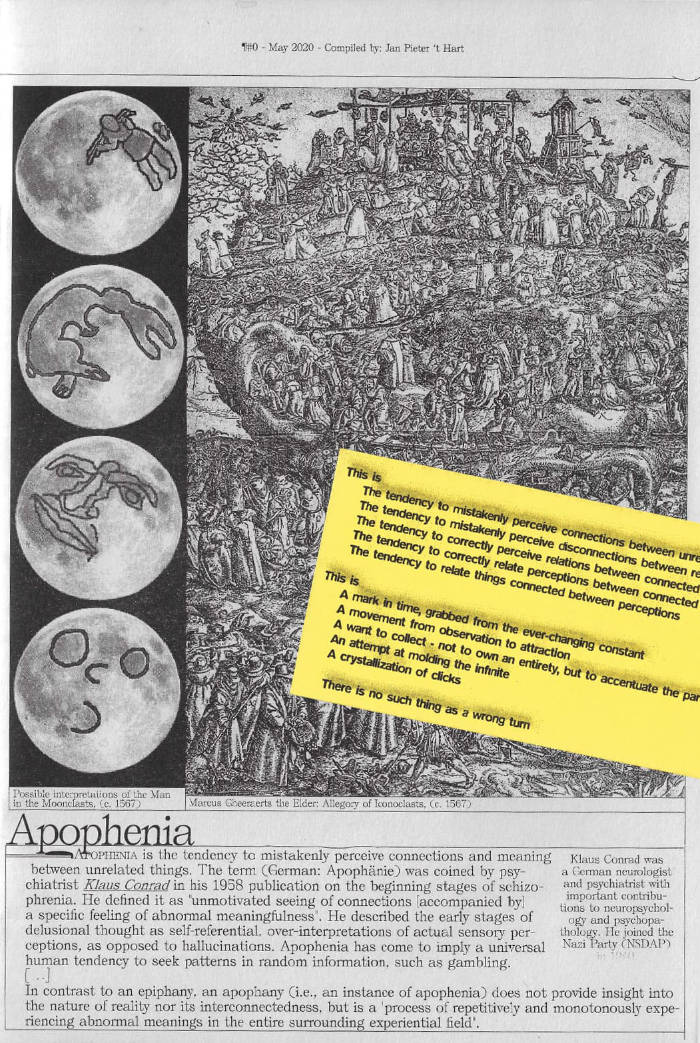
Fanta For The Ghosts
fanta for the ghosts by Elisabeth Molin
120mm x 210mm
edition of 500
Co-published with OneThousandBooks and Elisabeth Molin

fanta for the ghosts by Elisabeth Molin
120mm x 210mm
edition of 500
Co-published with OneThousandBooks and Elisabeth Molin

Chloe Chignell, Lili M. Rampre
This publication is a collection of poems written through a method called Transtexting. Transtexting explores the body’s implication in poetic production positioning the body and its movement as a listening aid, acting as a filter; a net capturing words, syntax and sounds.

The Hortus project is an open investigation into the nature of seemingly common objects through 'Floriography', urban gardens, and the history of female rights. Hortus was inspired by urban gardens in West Amsterdam and created with its plants by Lilia Luganskaia.
Joanna Cresswell about the 'Hortus':
History teaches us that a language of flowers can communicate endless things about the culture in which it emerged, and herein lies Lilia Luganskaia's interest. Taking inspiration from the world of 19th Century sentimental flower books, Hortus presents itself as a set of notes towards a modern handbook for contemporary floriography, considering what the discipline might look like today. By collecting common flora across one year in the urban gardens around her home in Amsterdam and cross-referencing their meanings with publications from the past, Luganskaia reflects on their natures, their roles, and the symbolic familiarity they might hold for the communities living with them. A female artist and reader of the twenty-first century, she seeks out the essence of modern life through her lens, and through flowers, just like the women who came before her.
Lilia Luganskaia (1990) Russian - Dutch multidisciplinary artist and author, based in Amsterdam. In her artistic practice, Lilia uses her background in documentary techniques to focus on what she calls ‘investigating reality’. Her practice is research-based, Lilia decodes abstract notions such as love, tourism, bureaucracy, politics, and feminism through the use of constructed images, sculptures, videos, and installations. One of the key elements of her work is to understand multiple aspects of the photographic image.

faits divers are the various reports in a news bulletin, miscellaneous human interest stories, theorised by Roland Barthes as ‘total’ and ‘immanent’ information.
ferrara deux (faits divers) scrolls around the discovered corpse of a talented street musician named Landau, mangled and sealed into vacuum bags in the walk-in of a modern Italian-American restaurant. Street performance is content for an attention economy, playing on authenticities and profiting from recognition.
In this debut novel, artist Ivan Cheng reconfigures recent performance texts into an approximation of a murder mystery.

FUGUES is a study of objects. Elements repeat and imitate one another like a polyphonic canon of voices narrating stories of domestic confinement in looped time.
With images by photographer Nicole Maria Winkler & texts by artist Issy Wood, writer Ella Plevin, model Freja Beha Erichsen and curator Elaine Tam.


Published on the occasion of '[…] kept in private. Making it public.' an installation by Lieven Lahaye, as part of the 9th Artishok Biennial, curated by Brigit Arop and Margit Säde. "It’s one thing to assemble a collection and display it in your private space, something else entirely to reveal what has been kept in private. Making it public. I'm standing in front of my bookshelf, looking up the meaning of 'private'. Private is still a complex word but its extraordinary historical revaluation is for the most part long completed."
Designed by: Ott Metusala

A mark in time, grabbed from the ever-changing constant
A movement from observation to attraction
A want to collect – not to own an entirety, but to accentuate the parts
An attempt at molding the infinite
A crystallization of clicks
¶#0 consists solely of texts and images found on the online collaborative encyclopedia Wikipedia. This publication, which is the first in the series, has many authors and we’d like to thank every one of them. It is assembled by Jan-Pieter ‘t Hart.
Jan-Pieter 't Hart (he/him) is an artist and art worker based in Amsterdam, working mostly in the fields of writing, sound, publishing and organizing. He co-runs a publishing platform called OUTLINE and a music community called corecore.
Size: 27,5 *18 cm
Page run: 16
Edition: 150 + 250
Published: May 2020, reprint December 2024
Design: Tjobo Kho

published commonly, no no no expounds an experimental poetic offering, both text & art.
each issue features a limited edition artwork. which can be tacked or framed or stored in a drawer.
celestial in nature, no no no takes the form required, and necessary.